Elements, Temperaments and Humors – Part 2
By Dennis Klocek 6 min read
See our video series on Temperaments and Health here.
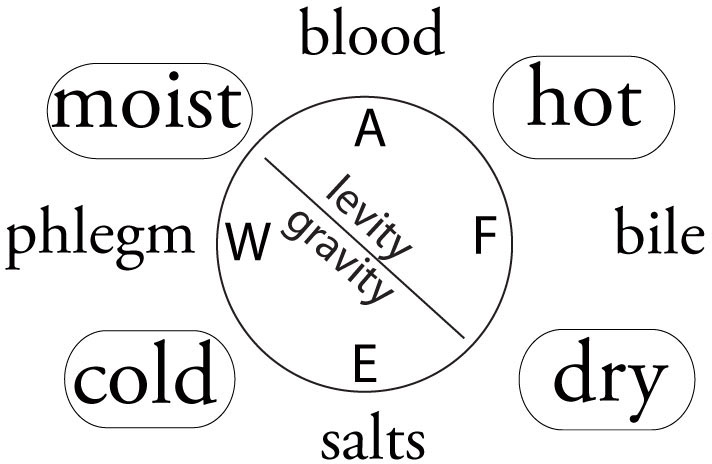
In the diagram E (earth), W (water), A (air) and F (fire) represent the four elements. The earth element in the form of dry, cold salts moves towards a moist tempering creating the humor, phlegm. The sequence is element (earth) to temperament (cold) to humor (phlegm) that is then further tempered into moisture. The temperaments are the bridge between the elements and the humors.
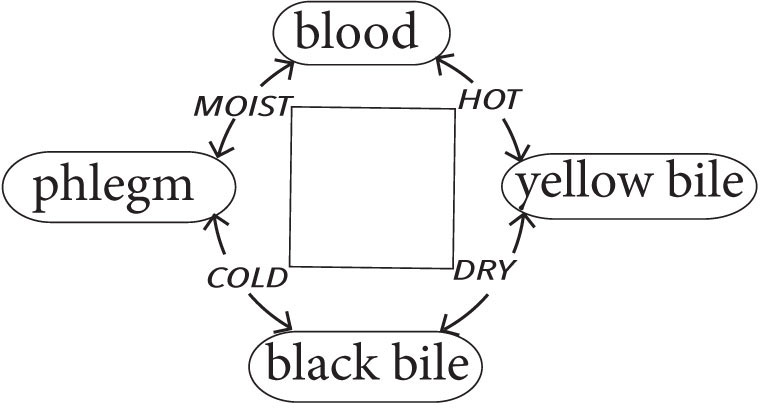
Phlegm, as a tempering of nutritive salts and water is the kapha of Ayurvedic medicine. As a temperament the moist forces in the body primarily in the liver produce secretions of worked over or “cooked” salts that have been lifted into phlegm. Phlegm is the workhorse of the water soluble patterns in the body. Lymph, blood, hormones, enzymes are the content of the humor phlegm. Phlegm results from the tempering of the salts in moisture.
The phlegm also includes other substances that regulate moisture such as tannins and soluble fibers, flavonoids, phenols and saponins. These water soluble substances in phlegm form colloids, gels, gums and mucous. Healthy phlegm as a humor of tempered earth salts and moistness of water is cool and soothing. When pure, phlegm leaves no precipitate or deposits in the body.
The production of phlegm from lymph and chyme (food juice from the intestines) is a catabolic breakdown or lysing of substances. The breakdown or lysis of the original forms of the nutrition must be as complete as possible for correct preparation for later anabolic synthesis in the liver. The salts involved in the breakdown come from the dry temperament in the salt regulated kidney function.
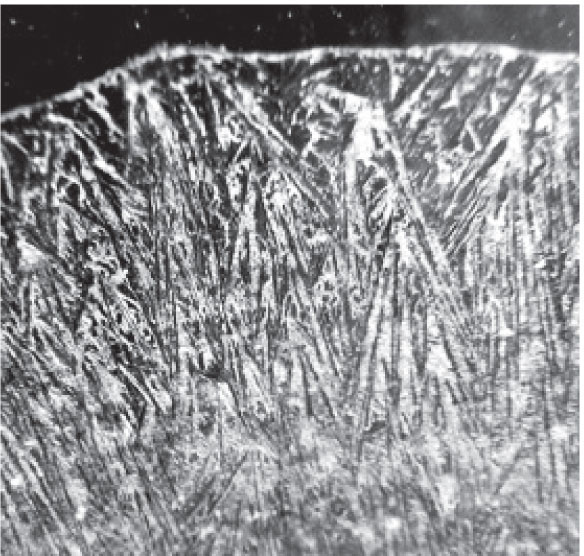
The image shows purified salt from helichrysym italicum. Salts from good nutrition can enter back into a living state when they unite with water. Salts from poor nutrition coagulate, lose their crystalline form and deposit “ash” as the source of illness. In the moist temperament the fine salts lyse and dissolve catabolically and are moved towards the liver where they are lifted away from a condition of being simply cold earth in water. This is a movement towards the hot temperament.
In traditional medicine “warmth” from the hot tempering, refers not only to palpable temperature but to a condition Avicenna calls innate heat. This refers to the ability of any cell in the body to metabolize nutritional substances. When health is good and the food has the proper salts the cells can metabolize them without much residue or “ash”. Ash in this context means something that is not useful to the body anymore. Each organ of the body contributes a part of the cooking process that produces healthy, assimilable salts (cell salts) with a minimum of “ash”.
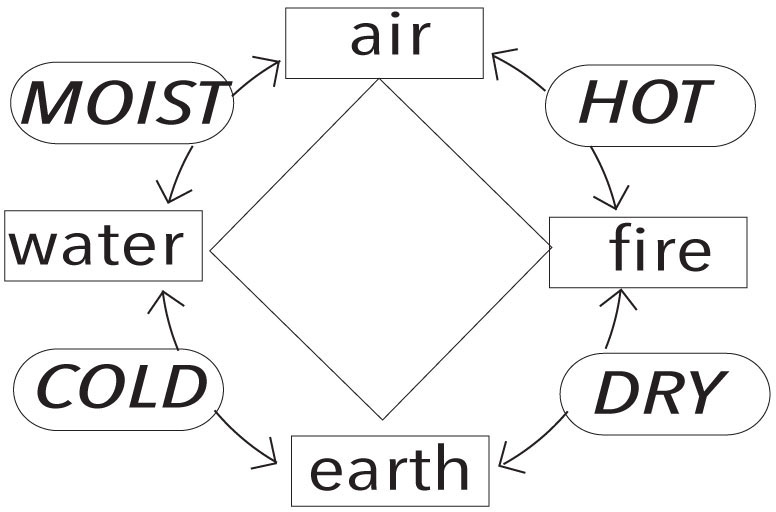
In this process the elements represent the native states of substances. Earth describes solids. Water describes the liquid form of solids. Air describes the gaseous form of liquids. Fire represents the volatile form of gasses. The elements represent the more fixed state of substances that to be metabolized must be changed into simpler forms.
Potassium is a metal (earth) that is acted on by enzymes (water). Then dispersed into an ionic interactive form (air). That can them be metabolized by a cell to produce innate heat (fire).When the substances are reduced to this level they are known as humors. Phlegm, blood, amino acids (peptides), fatty acids, and nutritive salts are humors. The sequence is that elements are tempered into humors.
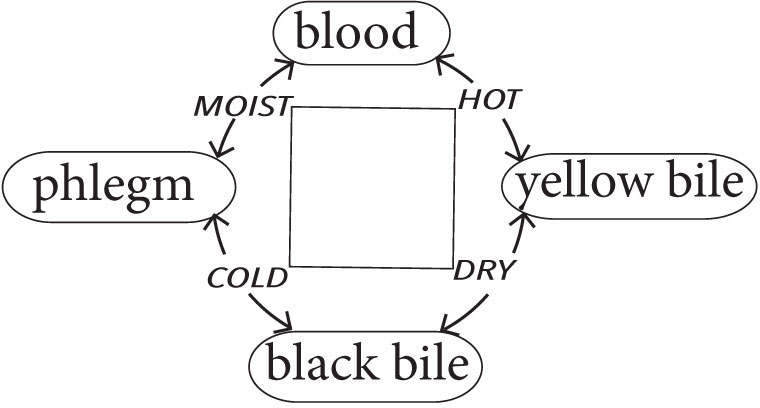
A peptide in the blood is an amino acid that has resulted from the breakdown of proteins. A fatty acid in the blood is the result of the breakdown of fats in the blood. In traditional medicine, enzymes, hormones, peptides, acids are considered to be the constituents of humors. The transformation from an elemental solid or liquid into an enzyme or hormone is brought about by the action of tempering forces from various organs.
The liver’s moistness creates the phlegm content. The heart’s hormonal warmth cooks the phlegm into blood. The spleen’s action on the blood renders fats into lymph. The kidney’s action on the lymph separates good nutritive salts from bad.
When all is well the innate heat of each cell metabolizing substances produces the palpable temperature. This requires a complex dance between organs of the body. Each organ receives something, transforms what it has received and then flows that to the next organ system.
Temperaments are the common language between organs of cold, moist, hot and dry. That is because each organ must temper its elemental state in order to communicate with the next organ. When the tempering takes place through all of the temperaments in an organ, good humors that support health are the result.
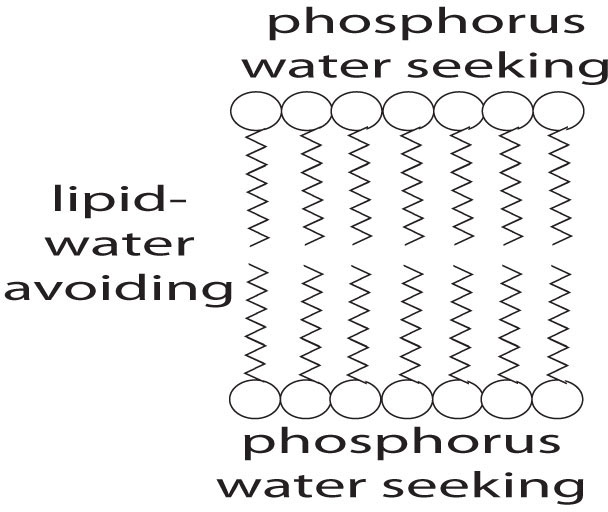
The skin in the largest organ of the body. The origin of skin is a membrane. The origin of a membrane is a phospholipid bilayer. Phosphorus, a water soluble mineral that supports oxygen assumption unites to fine droplets of fats in lymph solution. This is the universal living membrane that when layered onto itself forms skins of all kinds. The elements in the environment come to the skin from a periphery. The skin selects what comes across the phospholipid membrane.
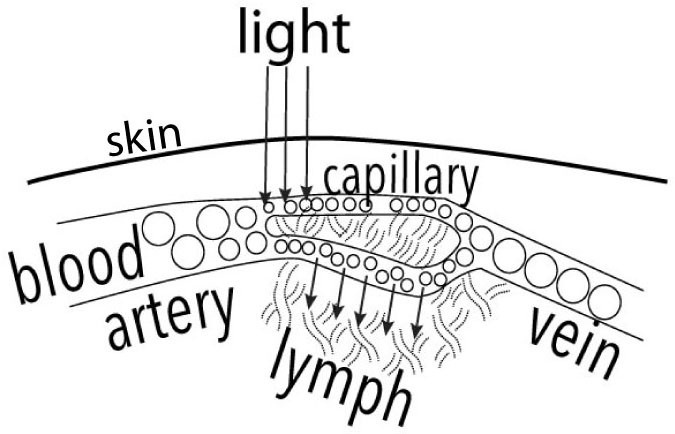
The skin and the blood have an intimate connection. This is seen clearly in the patterning given to the circulation by the capillary flow. The image shows the layer of skin with a small artery on the left approaching the surface. The blood in the small artery cannot pass through the capillaries unmodified. Blood cells fold on themselves to pass through the narrows of the capillary bed.
In the process lymph is squeezed out in a colloidal form that is composed of the humors of carbohydrates, proteins, fats and salts. This immune important lymph is constantly receiving light and sensory input from the skin. Light has a strong influence on the ability of the tempering processes in the blood to unfold harmoniously. Avicenna felt that the tempering into humors was the result of sensation and he included the movement of the mind in sense perception.
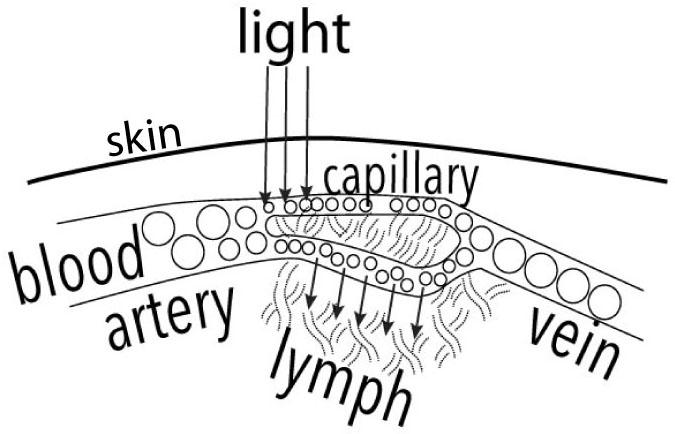
On the venous side (right) the blood cells recompose themselves and continue on to the liver, the most anabolic (up-building / synthesizing) organ in the body. The liver moves the lymph with its cold bile salts into a moist tempering. The result is a rich phlegm humor. From the constituents of the phlegm, the liver begins reconstruction, of amino acids and carbohydrates necessary for the formation of blood. The building of new substances enhances the potentials of the salts into becoming living phlegm.
The next step is to “cook” the phlegm into blood. This task requires a significant warming of the specific ingredients present in the phlegm. The liver phlegm has many specific linkages to the kidneys. The more universal blood needs system wide linkages. If the liver is the alpha of blood formation the spleen is the omega. In between the heart and lung must participate. Little of the needed warmth comes from the lungs. For universal warmth the heart is the central organ.

Dennis Klocek
Dennis Klocek, MFA, is co-founder of the Coros Institute, an internationally renowned lecturer, and teacher. He is the author of nine books, including the newly released Colors of the Soul; Esoteric Physiology and also Sacred Agriculture: The Alchemy of Biodynamics. He regularly shares his alchemical, spiritual, and scientific insights at soilsoulandspirit.com.
Similar Writings
Scientific Hypotheses – Truth or Error?
[Republished from Journal of Anthroposophical Medicine (JAM) Vol.10 1993] If one were to approach a professional scientist and challenge the hypothetical method as a flawed premise for good science, one would surely be met with vigorous protest. And, indeed, the protest would be well founded, because the hypothetical method is a well-proven cornerstone of scientific…